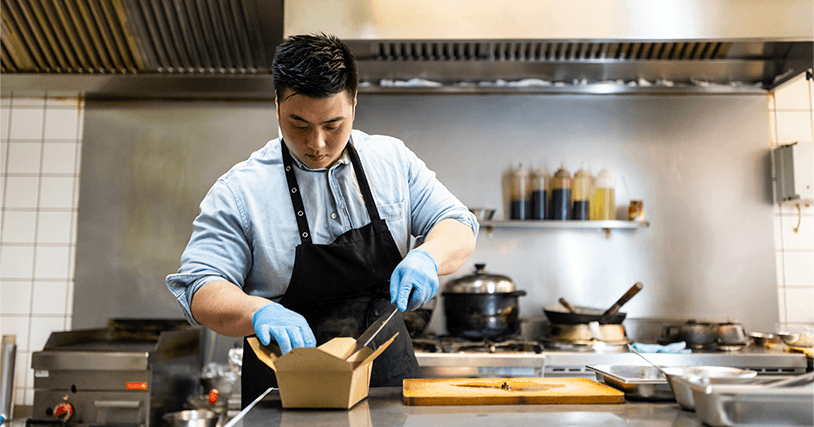
The concept of food delivery is not new—pizza and Chinese food restaurants have been doing it for decades. Recently, third party platforms like DoorDash and Uber Eats have taken food delivery to an entirely different level, amplifying their business opportunities by including all food categories through their multi-branded, digitally marketed, customer engagement platforms.
While third-party delivery enables a restaurant brand to reach new customers, it is still limited by the practical consideration of the travel distance for the delivery. To solve this problem, restaurants are embracing the “Ghost Kitchen.” In this model, restaurant brands of all sizes and types serve customers wherever the ghost operation has a footprint—with brands no longer limited by proximity to the customer. Increasingly, the food ordered through a delivery app is prepared in a Ghost Kitchen by cooks not necessarily employed by the restaurant, who moments later may prepare a different dish for another brand.
According to Hospital Technology, “Half of enterprise brands will launch some form of ghost, host or cloud kitchen concept in 2021, and that the global cloud kitchen market size, estimated at $43.1B in 2019, is forecasted to reach $71.4B by 2027.” Imagine a future where every market has a Ghost Kitchen–or two or three–with access to all major and emerging restaurant brands. In over-saturated markets, Ghost Kitchens will even compete with one another based on their curated brand offerings.
Given the number of restaurant brands interested in expanding their footprints, Ghost Kitchens will be empowered to adopt a performance-based approach to their portfolios. Customer demographics and flavor profiles coupled with the application of artificial intelligence and machine learning (AI/ML) algorithms will drive the dynamic, real-time addition (and deletion) of brands within a Ghost Kitchen's portfolio. Yet much like what happens with Google, where paid search ads influence search results, Ghost Kitchens may begin to exert undue influence on the restaurant industry.
Given the implications of this paradigm, restaurant brands would be wise to take these three points into consideration when choosing and signing up with Ghost Kitchens:
-
The urgency of the first-mover advantage. Getting a brand into the Ghost Kitchen model during the early market development phase may have bearing and long-term benefits on future performance when the market reaches saturation.
-
Termination clauses. Realizing that the Ghost Kitchen’s interests will not always align with the restaurant’s, brands should ensure they are not left at the mercy or disadvantaged by the AI/ML algorithms as the relationship matures. Instead, a restaurant should negotiate for an extended opportunity to nurture the brand’s presence in anticipation and advance of market saturation.
-
A flexible footprint. Consumer flavor profiles change over time. Ghost Kitchens provide a new level of flexibility for restaurants to establish a footprint wherever preferences for their food category are strongest. With Ghost Kitchens, it is just as easy to close service operations in an area where desire for a flavor has waned. Ghost Kitchens therefore enable restaurants to optimize distribution dynamically to better align with consumer tastes.
As a technology-driven initiative, Ghost Kitchens offer a viable way for restaurants to penetrate new markets and reach new consumers—and when implemented well, they can be the perfect recipe for success!